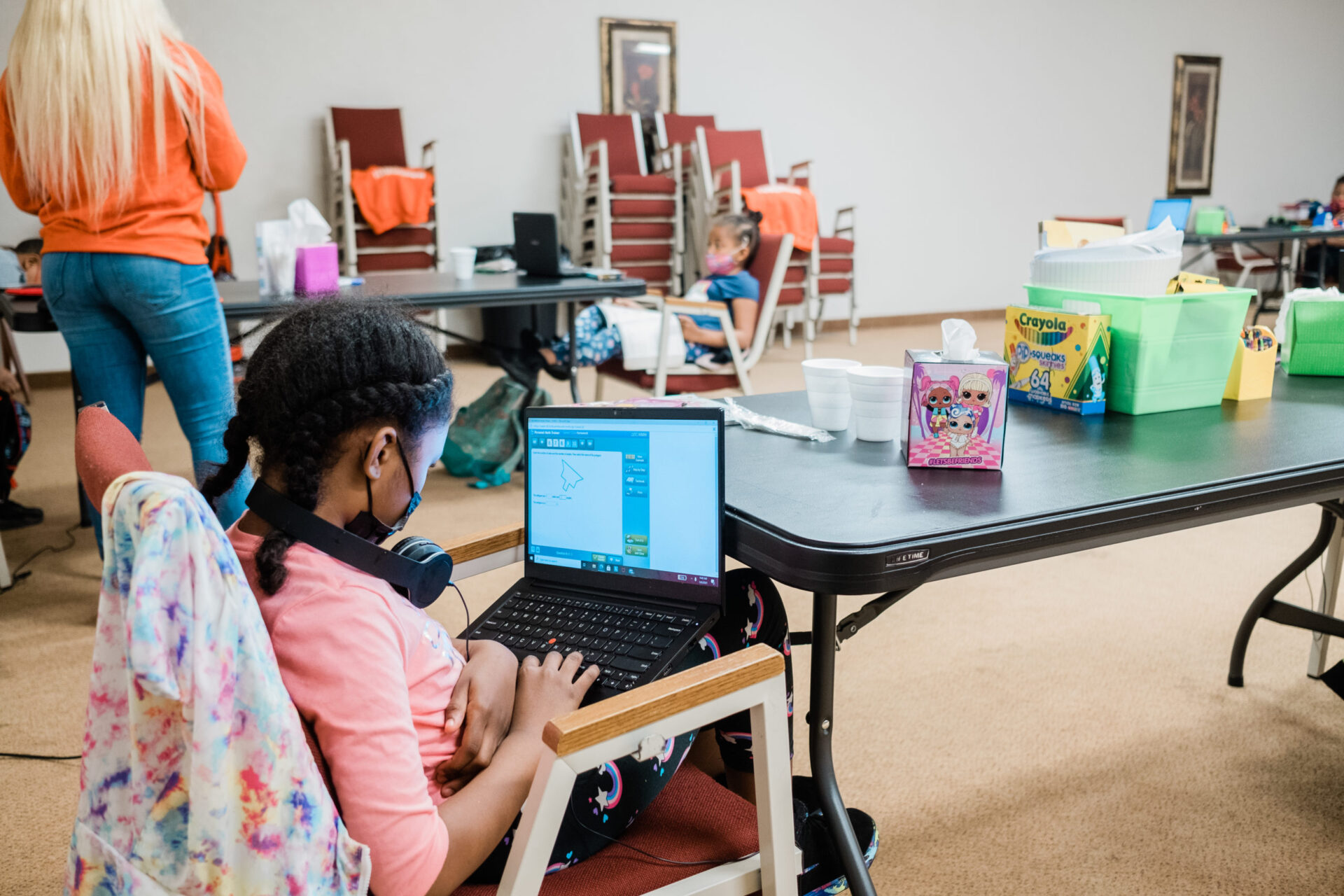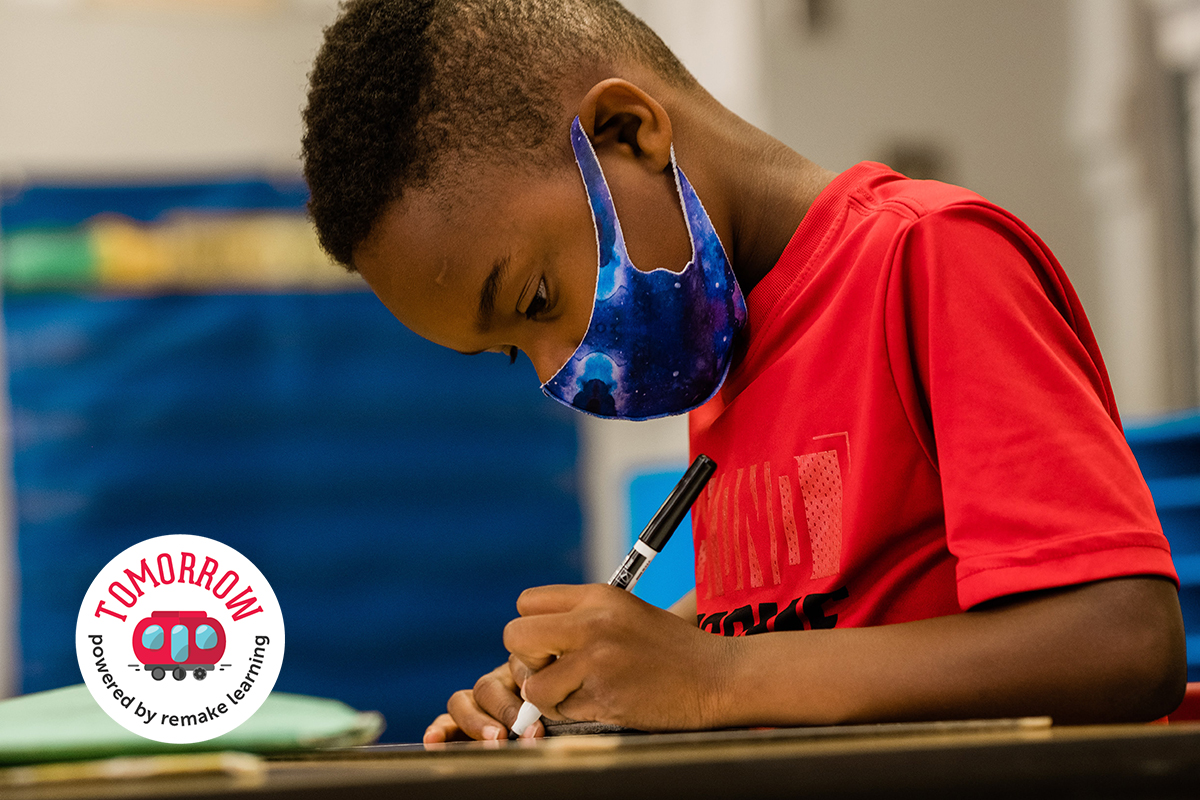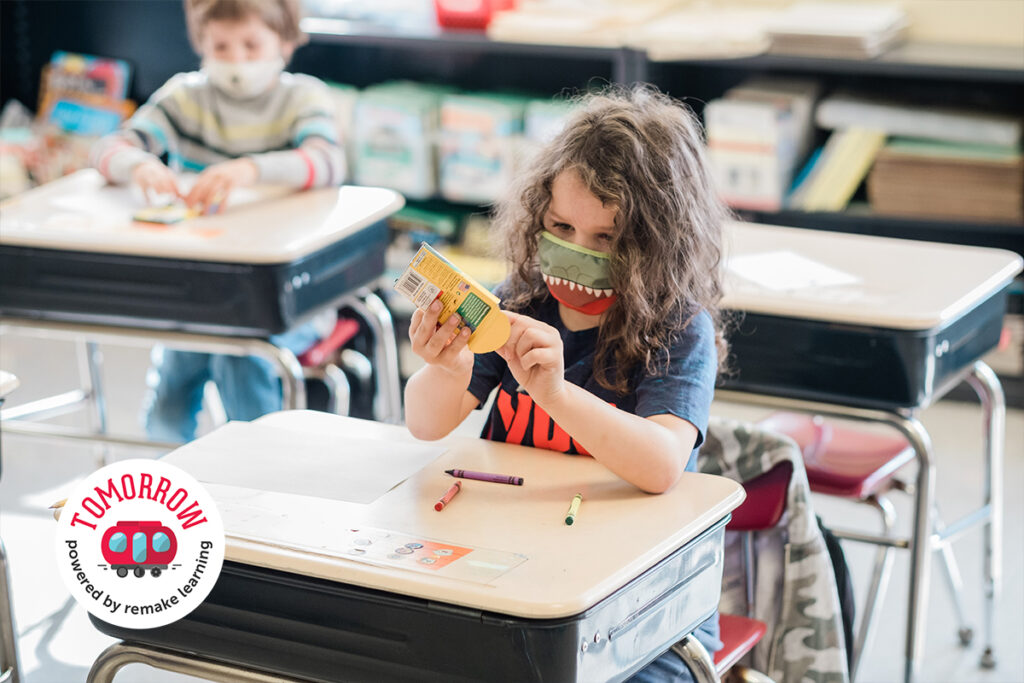Last year, a group of girls who were A and B students suddenly found themselves struggling to pass their classes.
Their public school in Pittsburgh was shuttered because of the pandemic. It would have been as easy to assume that remote learning was the issue. But their principal looked more closely and found that this academic problem didn’t have an academic solution.
These bright sixth- and seventh-graders, all from Somali Bantu families, were caring for younger siblings and doing their schoolwork in stolen moments. Their parents were busy doing all they could to earn enough to keep bills paid. There wasn’t always enough to eat, and this crisis had no end in sight.
Fortunately, Pittsburgh’s learning ecosystem kicked in: Their principal collaborated with the nonprofit A+ Schools Pittsburgh, which connected with the United Methodist Church Union, the United Way and the Department of Human Services to create a Learning Hub location right near the girls’ homes.
In a safe place that they and their families trusted, these students could concentrate on learning while their siblings were cared for by adults at the same location, explains James Fogarty, executive director of A+ Schools. They would also have healthy food for breakfast and lunch, relieving some of the burden on their parents.
With these immediate and vital needs met, these students soon got back to learning.

Beginning with the Basics
Groundbreaking work is happening in southwestern Pennsylvania to transform teaching and learning for the 21st century. But among the truths laid bare by the pandemic is this one: Even the most brilliant learning innovations won’t amount to much if a learner’s basic needs aren’t being met.
For more than half a century, America has understood this in the context of food. The National School Lunch Program was established in 1946 and has fed children ever since. In fact, research conducted between 2003 and 2018 found that many children receive better quality food at their schools than from any other source.
“Food insecurity has doubled during this pandemic,” says Leah Lizarondo, the co-founder and CEO of 412 Food Rescue. Many families are facing food insecurity for the first time, so they don’t know where to turn for support. Schools play a vital role in helping these families.
But Lizarondo points out that healthy food is just one of the basic needs that must be met in order for students to concentrate—and hopefully succeed—in school. Students also need to feel safe, accepted for who they are and represented in their school communities in order to thrive.
“There is a growing understanding of how powerful the need is for all students, particularly students of historically marginalized populations, to feel seen, heard and valued within their learning environment,” says Kristen Johnson, intermediate school assistant principal at South Fayette Township School District.
Johnson recently connected a Black elementary schooler with a Black teacher, because she realized the boy had interacted only with white teachers. It took just a few phone calls to make this connection happen, but the positive impact could echo through this child’s school years.
In the past, there have been important discussions around the idea of teaching the “whole child” and developing student agency, Johnson says. More recently, she sees educators going further by “reexamining those concepts with a focus on diversity, equity, and inclusion in the classroom.”
Whether for students of color, LGBTQ students or others, this shift in thinking can be valuable.
This is something Fred Rogers explored decades ago as he created “Mister Rogers’ Neighborhood.” In the new book “When You Wonder, You’re Learning,” co-authors Gregg Behr and Ryan Rydzewski cite research done in the 1970s that established a clear link between the feeling of safety and the ability to be curious and learn new things.
Students who feel discriminated against or unrepresented will have a harder time concentrating and learning than students who feel accepted. Even small steps can help. Johnson says South Fayette has added more diverse picture books to classroom libraries. They’ve also begun using a series of questions to review instructional materials and resources.
“Teachers have always wanted to create lessons that support their learners,” she says, “but now there is a dedicated time, space, and process for these important conversations. They can talk to their colleagues about specific lessons: Who is represented? Who is not? Does this experience value the dignity of all community members?”
When the Tomorrow campaign discussed this subject with teens from the Pittsburgh area, they said they were glad that local districts were beginning to take these steps. But they challenged all schools to do better.
“There’s progress to be made and I don’t think, especially in bigger school districts, that it’s sometimes even on their radar,” says Lauren Smith, a senior at Pittsburgh Science and Technology Academy.
Alexander Zielinski, a sophomore at Valley Junior/Senior High School in New Kensington, agrees: Although representation and acceptance are incredibly important, schools “don’t see it as a basic need. Because as long as you’re breathing and able to do some sort of work, you should be okay,” he says. “Which is certainly not okay.”
He points out that for students who feel unsafe at home, “school is their safety haven. And if their school is not going to support them, then they’re going to have to go through hell, each and every day, no matter where they are.”

Communication and Collaboration
Lizarondo and Fogarty, who have collaborated on projects to bring food from schools to bus stops to reach Pittsburgh-area students during the pandemic, agree that communication is step one. Schools must ask students and their families what they need rather than assuming they already know.
During the early days of Pittsburgh’s Learning Hubs, organizers held food truck events to help feed local families. At those events, they talked with individual parents and caregivers about what else they and their children needed.
Data has shown that parental engagement in learning has grown since the pandemic began. What if schools seized this moment to really get to know families and forge relationships where they can make sure basic needs are being met?
Schools can also communicate directly with community groups, which are often closely connected to local families and have a better understanding of actual needs, Lizarondo says.
Once we know what a given learner needs, the next step is being able to help in targeted ways.
Meeting learners’ basic needs often requires dozens of different homegrown solutions in each neighborhood, rather than one pre-planned, large-scale solution for an entire region. If funds can be given to trusted partners for use in small increments at their discretion, Fogarty says, those solutions can be created quickly in direct response to immediate needs.
If we know what learners need and we have that flexible funding, he says, “we can get much more granular about addressing the needs of families and students. But it takes some digging.”
The pandemic has made the need for this work even more visible. The question is: How will we respond to it?
“Sometimes in times of crisis, leadership reverts to what’s familiar so that it’s easy to feel like we’re doing something, rather than try to do something new that’s actually going to work. It’s comfortable to go back to the same systems, because they’re accepted,” Lizarondo says. “But doing more of something that was insufficient in the first place is not going to solve the problem.”
